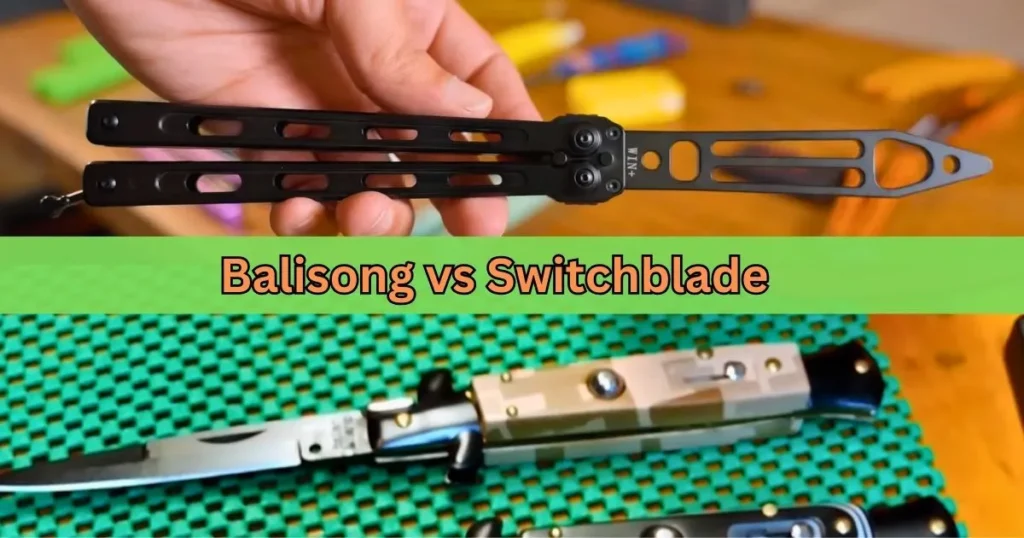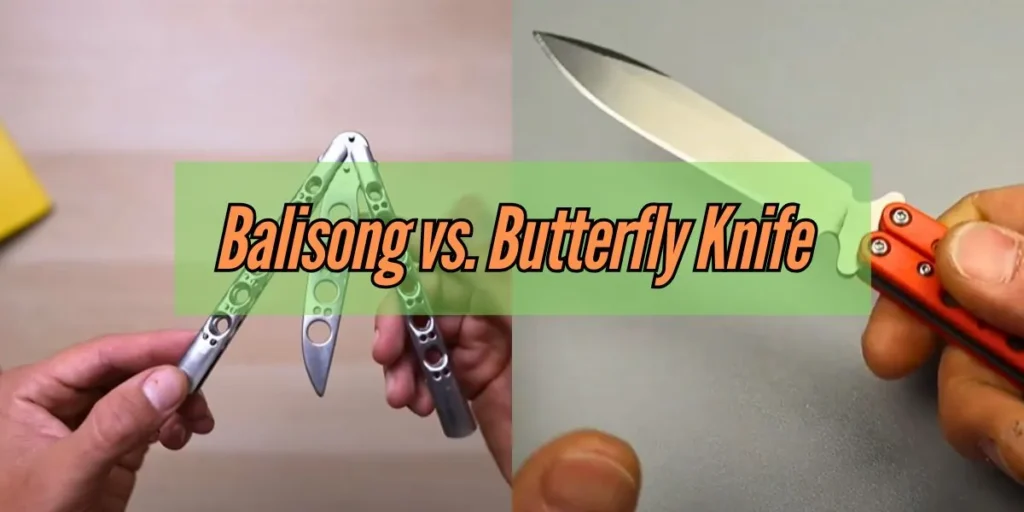Can You Ship Knives Through USPS? A Comprehensive Guide
Table of Contents
ToggleYes, you can ship knives through USPS, but there are restrictions. Knives must be legally allowed, adequately packaged, and compliant with USPS guidelines to ensure safe and lawful shipment.
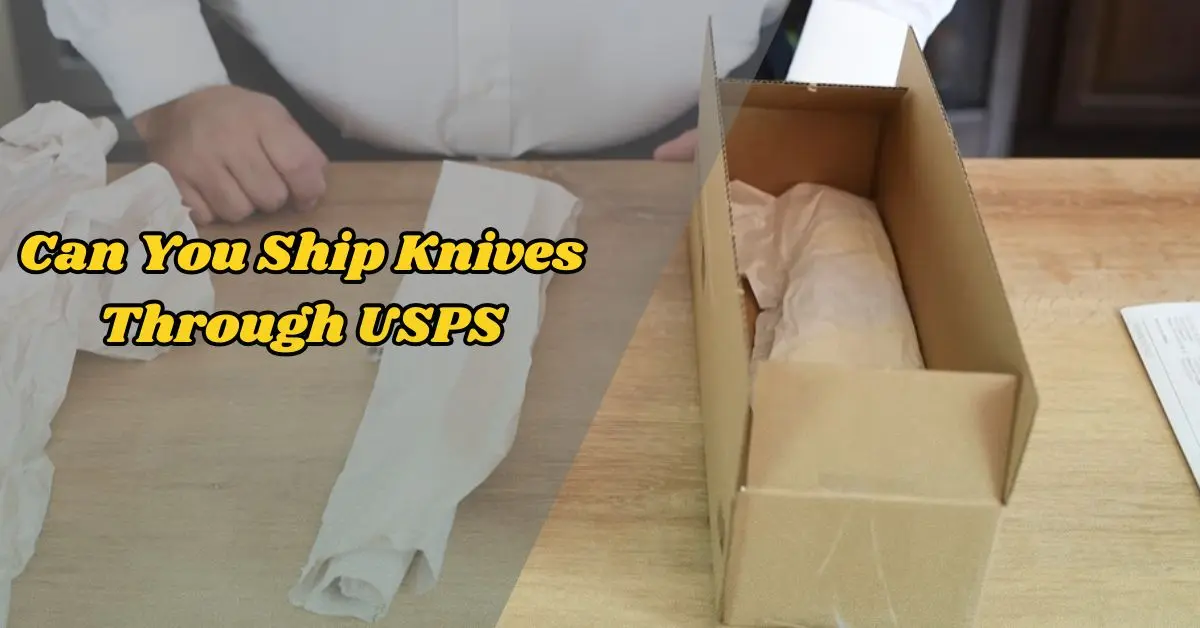
Can you ship knives through USPS? It is possible to ship knives via USPS, but it comes with specific regulations and requirements. Whether shipping a kitchen knife, pocket knife, or other type, understanding the rules is crucial to ensuring safe and legal delivery.
Many often ask if we can ship knives via USPS without encountering any problems, but there are restrictions on what types of knives can be mailed and how they should be packaged. While USPS allows most knives, there are exceptions – just like there are with other carriers like FedEx.
Shipping knives internationally can present unique challenges depending on the destination country’s laws. Knowing the ins and outs of shipping knives via USPS will prevent delays and ensure you comply with all necessary regulations. This article will answer all your questions, from Can you ship knives in the mail to Can you ship knives internationally via USPS, helping you ship with confidence.
General Rules for Shipping Knives
Before diving into the carrier-specific details, it’s essential to understand the general rules and key considerations when shipping knives. These include ensuring the knives are securely packaged to avoid injury during transit, complying with local and international shipping regulations, and properly labeling the package if required. Taking these steps helps ensure a safe and hassle-free shipping process.

What Types of Knives Can Be Shipped?
Standard knives shipped through the mail include a variety of everyday and specialty tools, such as:
- Kitchen knives: Chef’s, paring, and other essentials for food prep are among the most commonly shipped due to their widespread use at home and in professional kitchens.
- Pocket knives: Folding knives, multi-tools, and similar items are popular for their portability and versatility; they are helpful for tasks like opening packages or camping.
- Utility knives: These are designed for specific tasks like carpentry, crafting, or outdoor use. They include box cutters and fixed-blade knives favored by hobbyists and professionals.
Some knives face shipping restrictions due to safety or legal concerns:
- Switchblades and concealed weapons: These are heavily regulated due to their potential risks and their association with criminal activity in some areas.
- Combat or martial arts knives: Due to their use in self-defense or combat training, items like butterfly knives, throwing stars, and daggers often have stricter rules, especially for cross-border shipping.
Research local and federal laws before shipping or receiving restricted knives to avoid legal issues.
Legal Considerations
Shipping knives requires a thorough understanding of federal, state, and local laws to ensure compliance and avoid potential legal issues:
- Federal Laws: Certain knives, such as switchblades, are prohibited under federal law. The Federal Switchblade Act bans the transportation or shipment of these knives across state lines unless under specific exemptions, such as for law enforcement or military use. Always research and confirm the legality of the knife you intend to ship before proceeding, as ignorance of the law is not a defense.
- State and Local Laws: Regulations surrounding the ownership, possession, and shipment of knives vary widely between states and cities. For example, some states restrict blade length, while others prohibit particular knife styles, such as butterfly or gravity knives. Additionally, cities like New York City impose strict regulations on carrying or possessing specific knife designs, making understanding the destination’s particular rules critical.
Failing to comply with these laws can lead to severe penalties, including fines, confiscation of the knives, or even criminal charges. Proper due diligence when shipping knives is essential to protect yourself from unintended legal consequences. Always consult current legal guidelines or seek professional advice if you’re uncertain.
Packaging Requirements

Safety is paramount when shipping knives, ensuring the item arrives in perfect condition and protecting mail handlers from potential injuries. Proper packaging is key to achieving a secure and hassle-free delivery. Here are some detailed recommendations to help you ship knives safely and responsibly:
- Sheath or Blade Cover: Always cover the blade with a protective sheath if available. If not, wrap the blade securely in thick cardboard or similar material to prevent it from cutting through the packaging during transit. This step is crucial for reducing the risk of accidents.
- Padding: Use plenty of padding to safeguard the knife. Bubble wrap, foam, or soft fabric are great options to cushion the blade and handle. Wrap the knife tightly, ensuring there are no exposed edges. For added security, consider wrapping the padded knife in an additional material layer to keep it in place.
- Durable Outer Box: Select a sturdy, durable box that can withstand the rigors of the shipping process. Avoid using weak or flimsy materials that might tear, bend, or break easily. Double-boxing provides extra protection if the knife is particularly heavy or sharp.
- Tape and Seal: Securely seal the package using heavy-duty packing tape. Pay special attention to all edges and flaps of the box to ensure they won’t accidentally open during transit. Reinforce any potential weak points with extra tape.
Can You Ship Knives Through USPS?
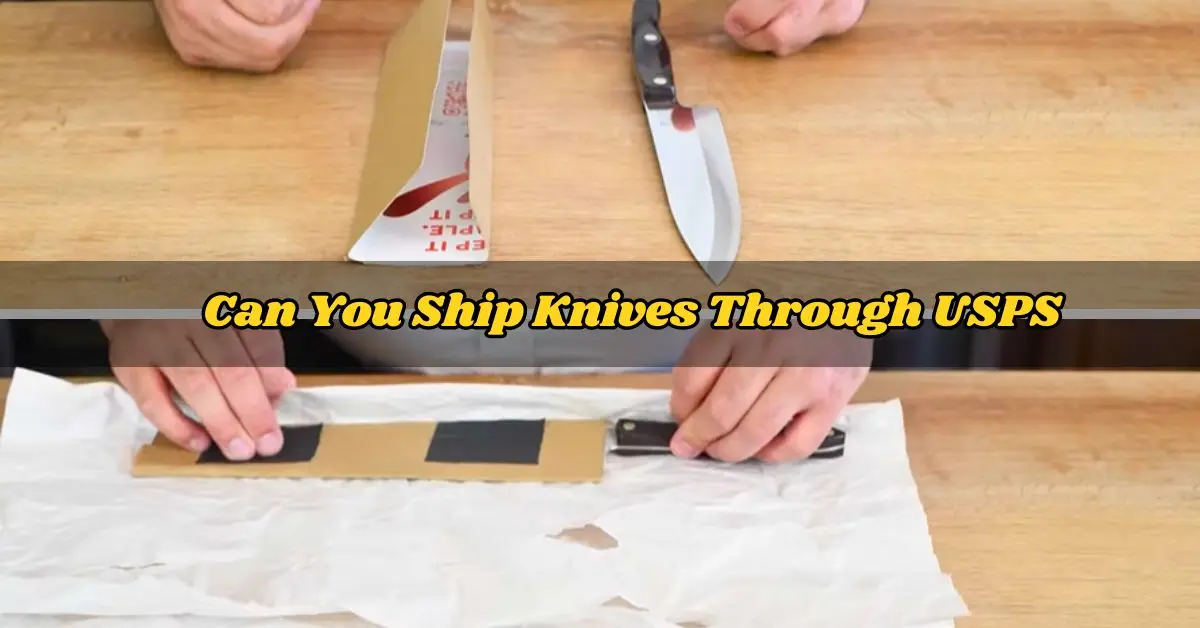
USPS Regulations
You can ship many types of knives through USPS, but you must follow specific restrictions and guidelines to ensure compliance with postal regulations. Here’s what you need to know:
- Permissible Knives: Most common knives, such as kitchen knives, pocket knives, and utility knives, are generally allowed for shipping. These knives are considered non-restricted if they are correctly packaged and do not pose a safety hazard.
- Restricted Knives: Certain knives, such as switchblades, butterfly knives, or knives classified as “concealed weapons,” may not be eligible for shipping through USPS. Additionally, some states or local jurisdictions may have laws regulating the shipment or ownership of specific knife types, so it’s essential to check USPS guidelines and local regulations before shipping.
- Hazardous Materials: Knives must be packaged securely to prevent them from becoming dangerous to mail handlers, recipients, or other packages in transit. They should be covered with protective sheaths, wrapped securely, and placed in durable, puncture-resistant packaging to ensure safe handling and delivery.
When shipping knives, always double-check USPS policies and consult local laws to ensure your shipment complies with all necessary rules and restrictions. Proper packaging and attention to guidelines will help avoid potential issues during the shipping process.
Documentation and Labeling
Proper documentation is crucial for ensuring compliance with shipping regulations and avoiding delays or issues during transit:
- Always include a clear and accurate description of the item, especially if required by customs or additional USPS policies. This helps facilitate smooth processing and ensures all necessary information is provided for legal and logistical purposes.
- When labeling packages, consider using non-descriptive terms for privacy and discretion. For instance, instead of labeling the package as “knife,” opt for a more general term like “kitchen utensil” or something equally non-specific but accurate. This approach adds a layer of privacy for the sender and recipient and minimizes the risk of misunderstandings or unwanted attention during transit.
Can You Ship Knives Through FedEx?

FedEx Policies
FedEx allows shipping knives but enforces strict safety and compliance standards to ensure legal adherence and safe handling during transit. Proper packaging is crucial when shipping knives through FedEx to avoid accidents or damage during transportation.
- Allowed Items: Similar to USPS, FedEx permits the shipment of most utility knives, chef’s knives, and pocket knives. These are considered everyday tools and culinary items widely used and legally permissible to ship.
- Prohibited Items: FedEx strictly prohibits the shipment of weapons classified as illegal, including switchblades, ballistic knives, and certain types of combat knives. These items may pose safety risks and are often restricted by local, state, or federal laws.
Ensure your shipment complies with FedEx’s guidelines and applicable laws to avoid delays or rejection.
Safety and Security
When shipping through FedEx:
- Always follow all safety precautions to ensure the safe handling of your package. For example, if your item includes sharp objects like a blade, ensure they are properly secured and covered to prevent accidents. Use adequate padding to protect your item and reduce the risk of damage during transit.
- Choose the right FedEx service level based on your specific shipping needs. Whether you need overnight delivery for urgent shipments, international shipping for global destinations, or standard delivery options for less time-sensitive items, FedEx offers various services to meet your requirements.
Prohibited or Restricted Items
Always review FedEx’s prohibited items list for the latest updates to ensure your shipments comply with their guidelines. Staying informed about restricted items can help avoid potential non-compliance issues, delays, or penalties during shipping.
Can You Ship Knives Internationally?

Shipping knives internationally presents unique challenges due to strict customs regulations and varying country-specific restrictions. Many countries have laws governing the import of sharp objects, requiring detailed documentation or prohibiting specific knives altogether.
Ensuring proper packaging to prevent accidents during transit is another critical consideration for safe and compliant shipping.
Country-Specific Regulations
Each country has unique laws and regulations about importing knives, and it’s essential to understand these rules before attempting to bring knives across borders. For example:
- Canada: Folding or pocket knives that don’t open automatically are generally acceptable. However, knives with push-button mechanisms or spring-operated blades, such as switchblades, are prohibited and may be confiscated at customs.
- UK: Knives with blades over 3 inches are heavily restricted and require specific justification, such as professional or culinary purposes. artular Specific knives, like flick knives and butterfly knives, are banned outright.
- Australia: Importing knives is highly regulated, with many types requiring special import permits. Some knives, like disguised blades or throwing stars, are completely banned and illegal to bring into the country without facing penalties.
Understanding these rules is crucial to avoid legal issues and ensure compliance with local laws.
Customs Considerations
When shipping internationally:
- Include full item descriptions on customs forms.
- Pay attention to duties or tariffs that may apply to the shipment.
- Verify that the recipient has the proper permissions to own or receive knives in their country.
Shipping Carrier Options
For international knife shipping, consider the advantages of different providers:
- USPS: Affordable but subject to customs delays.
- FedEx/DHL: Faster, but often more expensive.
- UPS: Suitable for heavier or bulkier items.
How to Ship Knives Safely and Legally in the Mail
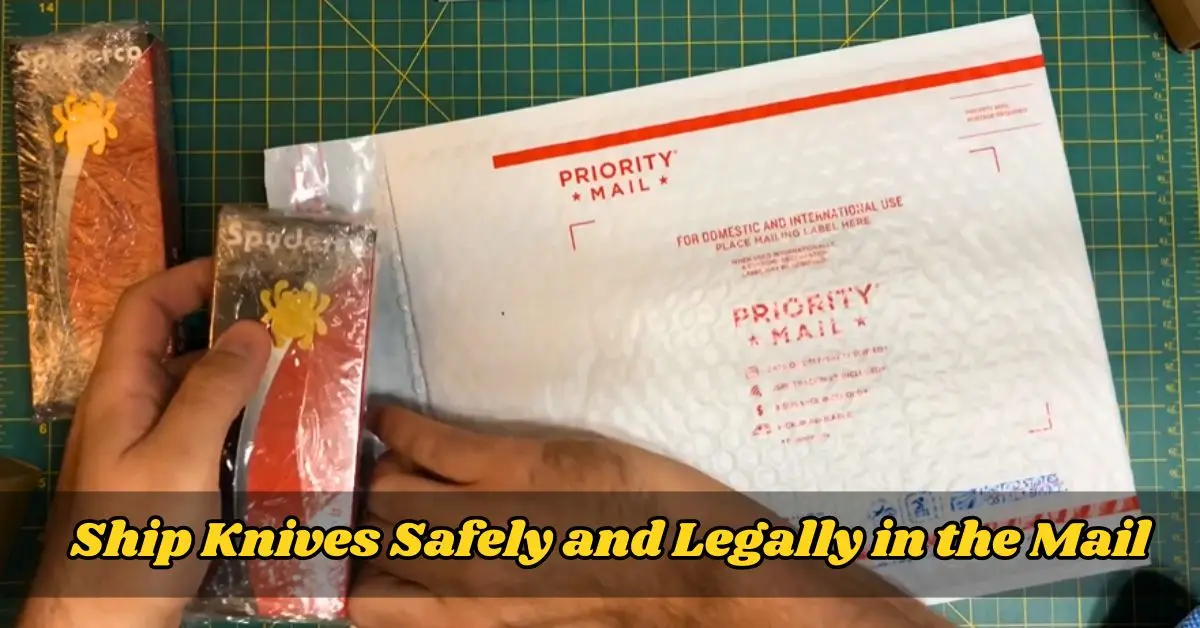
To ensure your knife shipment complies with regulations and arrives safely, follow these steps for a smooth shipping process:
Choose the Right Carrier
Select a reputable carrier that allows knives to be shipped and is familiar with handling sharp or restricted items. Some airlines may have specific policies regarding shipping knives, so confirm these in advance.
Secure the Knife
Ensure the knife is adequately secured to prevent it from shifting or causing injury during transit. For folding knives, make sure the blade is closed and locked. Use a sheath or protective covering to keep the blade safe for fixed-blade knives.
Pack It Properly
Use sturdy packaging materials, such as a durable box, bubble wrap, or foam padding, to protect the knife and prevent damage. Double-check that no sharp edges are exposed and that the knife is immobilized within the package.
Label Accurately
Clearly label the package with the appropriate shipping and return addresses. If required, mark the package as containing “sharp objects” to ensure it is handled with extra care during transit. However, avoid misleading or incomplete labeling, which can cause delays or compliance issues.
Check Guidelines
Familiarize yourself with the guidelines of both the carrier and the destination country or state. Certain types of knives, such as switchblades or butterfly knives, may be restricted, so it’s essential to understand what is permitted.
Common Mistakes to Avoid
- Mislabeling the Package: Inaccurate or incomplete labeling can cause compliance issues or delivery delays. Always double-check your shipping information.
- Ignoring Packaging Standards: Poor packaging can lead to damage, injury, or even carrier rejection. Take extra care to secure and protect the knife.
- Overlooking Legal Restrictions: Research the laws in the recipient’s location to ensure the knife is legal to own or import. Some places have strict regulations on certain types of knives.
Conclusion
Shipping knives through USPS is possible if you adhere to the rules and regulations to ensure safety and legality. From properly packaging the item to understanding USPS’s specific guidelines, preparing your shipment correctly can save you from unnecessary hassle or potential penalties.
However, shipping knives isn’t just about logistics—it’s about responsibility. Knives, while versatile tools, can also cause harm if mishandled. By shipping them thoughtfully and following regulations, you’re ensuring the safety of postal workers and recipients and contributing to a culture of mindful ownership and usage.
So, the next time you package a knife for shipment, consider this: every step you take towards safe and lawful shipping reflects a commitment to accountability. Isn’t it worth the extra effort to make the world safer, one package at a time?
Let that thought guide your decisions as you navigate the often-overlooked nuances of mailing knives.
FAQs
No, not all knives can be shipped via USPS. Certain types, like switchblades, are prohibited. Always check USPS guidelines for the specific knife you want to ship.
Package the knife in a protective sheath or cover, then place it in a sturdy, padded box to prevent injury and damage during transit.
Yes, but international shipments must comply with the destination country’s laws on knife imports. Some countries have strict restrictions on certain types of knives.
Yes, knives can be shipped as gifts through USPS, provided they comply with both USPS and local laws. Ensure proper packaging and accurate declaration.
If USPS refuses to ship your knife, they will return it with an explanation. Review the guidelines to ensure compliance and try again with proper packaging and documentation.
Related Posts
-
 17 Dec 2024 KnifeThe Ultimate Guide on How to Date Buck Knives
17 Dec 2024 KnifeThe Ultimate Guide on How to Date Buck Knives -
 17 Dec 2024 KnifeHow Old Is My Buck Knife? A Comprehensive Guide
17 Dec 2024 KnifeHow Old Is My Buck Knife? A Comprehensive Guide -
 16 Dec 2024 KnifeBalisong vs Switchblade: Which Knife Suits Your Needs Best?
16 Dec 2024 KnifeBalisong vs Switchblade: Which Knife Suits Your Needs Best? -
 16 Dec 2024 KnifeBalisong vs Butterfly Knife: What’s the Real Difference?
16 Dec 2024 KnifeBalisong vs Butterfly Knife: What’s the Real Difference? -
 13 Dec 2024 KnifeCan You Sharpen Clipper Blades? A Complete Guide
13 Dec 2024 KnifeCan You Sharpen Clipper Blades? A Complete Guide -
 12 Dec 2024 KnifeCan You Ship Knives Through USPS? A Comprehensive Guide
12 Dec 2024 KnifeCan You Ship Knives Through USPS? A Comprehensive Guide -
 10 Dec 2024 KnifeWhat Grit Whetstone for Kitchen Knives? Expert Tips Inside!
10 Dec 2024 KnifeWhat Grit Whetstone for Kitchen Knives? Expert Tips Inside! -
 07 Dec 2024 KnifeHow Long Can a Kitchen Knife Be Wet? A Practical Guide
07 Dec 2024 KnifeHow Long Can a Kitchen Knife Be Wet? A Practical Guide -
 05 Dec 2024 KnifeHow to Sharpen a Sickle Like a Pro: Expert Tips
05 Dec 2024 KnifeHow to Sharpen a Sickle Like a Pro: Expert Tips -
 05 Dec 2024 KnifeHow to Sharpen Titanium Coated Knife - Expert Tips
05 Dec 2024 KnifeHow to Sharpen Titanium Coated Knife - Expert Tips



